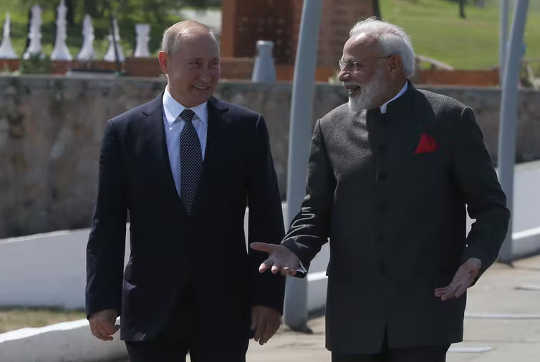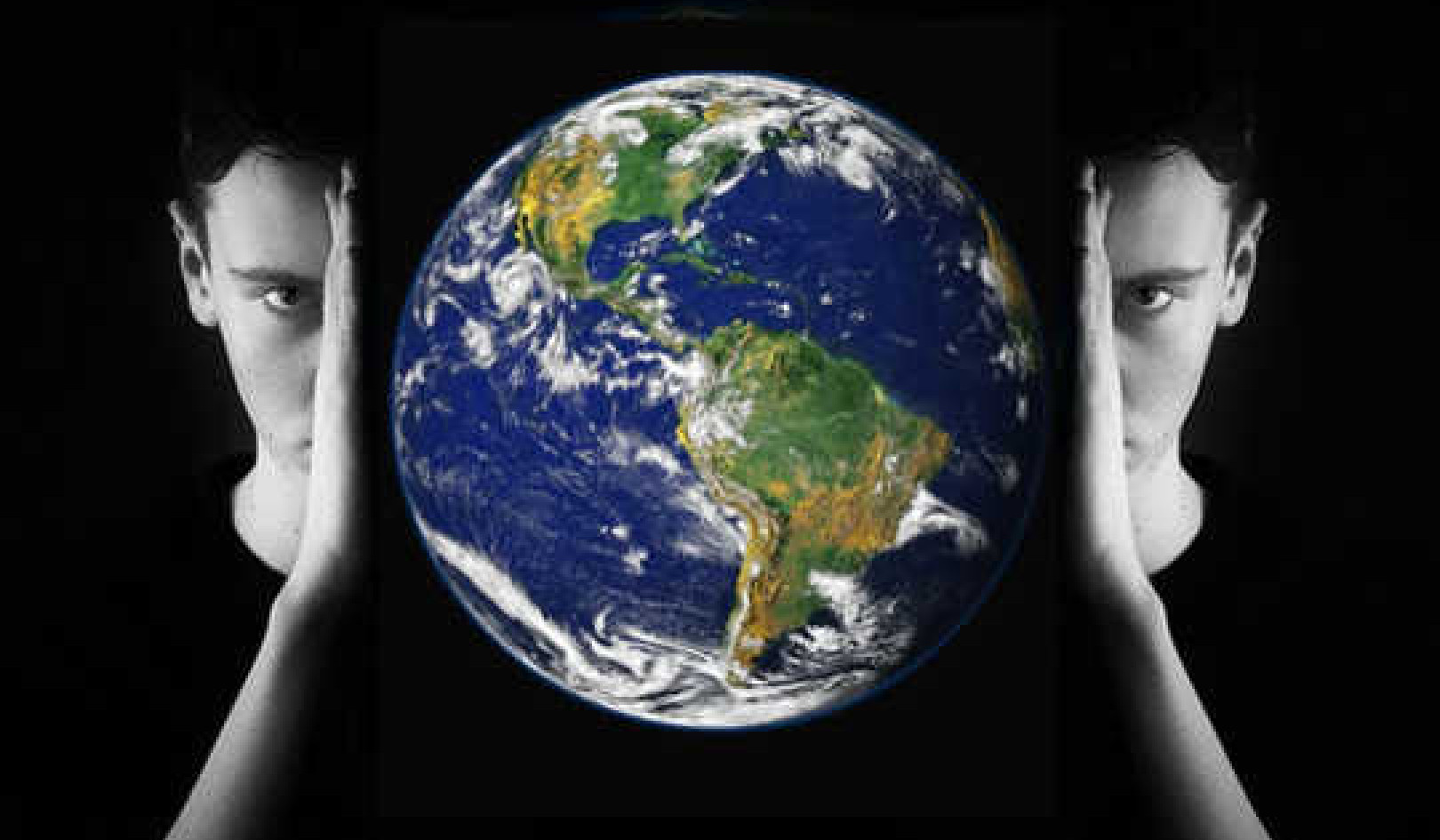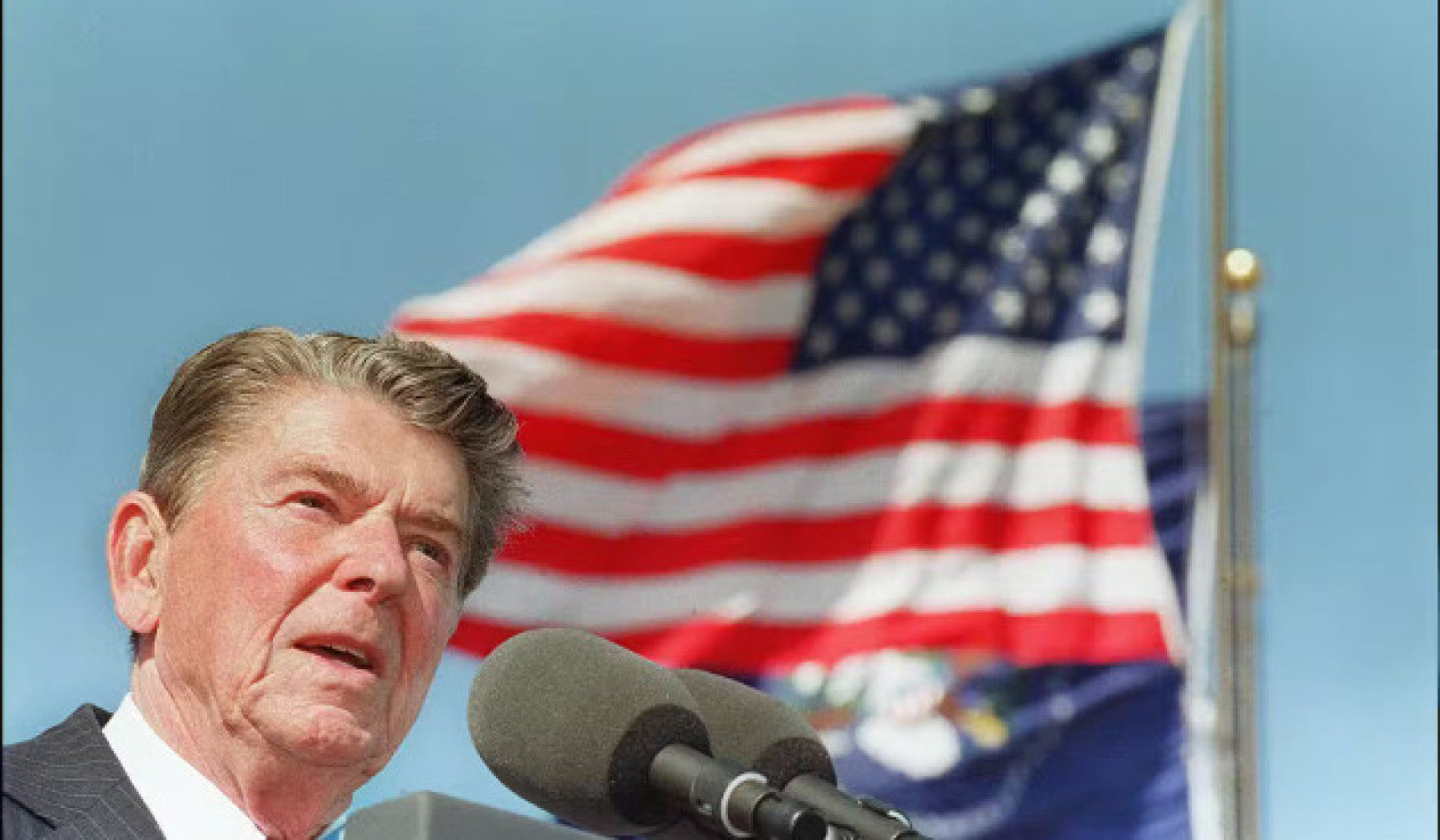
A close relationship based on strategic needs. Mikhail Svetlov/Getty Images
As global democracies lined up to condemn the actions of Russia in Ukraine, one country was less forthcoming in its criticism – and it was the largest democracy of them all: India.
Throughout the ongoing crisis, the government in India has carefully avoided taking an unequivocal position. It has abstained on every United Nations resolution dealing with the matter and refused to join the international community in economic measures against Moscow, prompting a warning from the U.S. over potentially circumventing sanctions. Even statements from India condemning the reported mass killing of Ukrainian civilians stopped short of apportioning blame on any party, instead calling for an impartial investigation.
As a scholar of Indian foreign and security policy, I know that understanding India’s stance on the war in Ukraine is complex. In considerable part, India’s decision to avoid taking a clear-cut position stems from a dependence on Russia on a host of issues – diplomatic, military and energy-related.
Moscow as strategic partner
This stance is not entirely new. On a range of fraught global issues, India has long avoided adopting a firm position based on its status as a nonaligned state – one of a number of countries that is not formally allied to any power bloc.
From a strategic standpoint today, decision-makers in New Delhi believe that they can ill afford to alienate Russia because they count on Moscow to veto any adverse United Nations Security Council resolution on the fraught question of the disputed region of Kashmir. Since the partition of the subcontinent in 1947, India and Pakistan have fought three wars over Kashmir, and the region continues to be a source of tension.
Harking back to the days of the Soviet Union, India has relied on Russia’s veto at the U.N. to protect itself from any adverse statement on Kashmir. For example, during the East Pakistani crisis of 1971 – which led to the creation of Bangladesh – the Soviets protected India from censure at the U.N., vetoing a resolution demanding the withdrawal of troops from the disputed region.
In all, the Soviets and Russia have used their veto power six times to protect India. India has not had to rely on Russia for a veto since the end of the Cold War. But with tension over Kashmir still high amid sporadic fighting, New Delhi will want to ensure that Moscow is on its side should it come before the Security Council again.
In large part, India’s close relationship with Russia stems from Cold War allegiances. India drifted into the Soviet orbit mostly as a counter to America’s strategic alliance with Pakistan, India’s subcontinental adversary.
India is also hopeful of Russian support – or at least neutrality – in its long-standing border dispute with the People’s Republic of China. India and China share a border of more than 2,000 miles (near 3,500 km), the location of which has been contested for 80 years, including during a war in 1962 that failed to settle the matter.
Above all, India does not want Russia to side with China should there be further clashes in the Himalayas, especially since the border dispute has again come to the fore since 2020, with significant skirmishes between the Indian Army and China’s People’s Liberation Army.
Russia as supplier of weapons
India is also acutely dependent on Russia for a range of weaponry. In fact, 60% to 70% of India’s conventional arsenal is of either Soviet or Russian origin.
Over the past decade, New Delhi has sought to significantly diversify its weapons acquisitions. To that end, it has purchased more than US$20 billion worth of military equipment from the U.S. over the past decade or so. Nevertheless, it is still in no position to walk away from Russia as far as weapons sales are concerned.
To compound matters, Russia and India have developed close military manufacturing ties. For nearly two decades, the two countries have co-produced the highly versatile BrahMos missile, which can be fired from ships, aircraft or land.
India recently received its first export order for the missile, from the Philippines. This defense link with Russia could be severed only at considerable financial and strategic cost to India.
Also, Russia, unlike any Western country including the United States, has been willing to share certain forms of weapons technology with India. For example, Russia has leased an Akula-class nuclear submarine to India. No other country has been willing to offer India equivalent weaponry, in part over concerns that the technology will be shared with Russia.
In any case, Russia is able to provide India with high-technology weaponry at prices significantly lower than any Western supplier. Not surprisingly, despite significant American opposition, India chose to acquire the Russian S-400 missile defense battery.
Energy reliance
It isn’t just India’s defense industry that is reliant on Moscow. India’s energy sector is also inextricably tied to Russia.
Since the George W. Bush administration ended India’s status as a nuclear pariah – a designation it had held for testing nuclear weapons outside the ambit of the Nuclear Nonproliferation Treaty – India has developed a civilian nuclear program.
Although the sector remains relatively small in terms of total energy production, it is growing – and Russia has emerged as a key partner. After the U.S.-India civilian nuclear agreement of 2008 allowed India to participate in normal civilian nuclear commerce, Russia quickly signed an agreement to build six nuclear reactors in the country.
Neither the U.S. nor any other Western country has proved willing to invest in India’s civilian nuclear energy sector because of a rather restrictive nuclear liability law, which holds that the manufacturer of the plant or any of its components would be liable in the event of an accident.
But since the Russian government has said it will assume the necessary liability in the event of a nuclear accident, it has been able to enter the nuclear power sector in India. Western governments, however, are unwilling to provide such guarantees to their commercial companies.
Away from nuclear power, India also has invested in Russian oil and gas fields. India’s state-run Oil and Natural Gas Commission, for example, has long been involved in the extraction of fossil fuels off Sakhalin Island, a Russian island in the Pacific Ocean. And given that India imports close to 85% of its crude oil requirements from abroad – albeit only a small fraction from Russia – it is hardly in a position to shut off the Russian spigot.
U.S. Secretary of State Antony Blinken recently noted that India’s “relationship with Russia has developed over decades at a time when the United States was not able to be a partner to India” and suggested that Washington was prepared now to be that partner. But given the diplomatic, military and energy considerations, it is difficult to see India deviating from its balancing act over Russia any time soon.
About The Author
Sumit Ganguly, Distinguished Professor of Political Science and the Tagore Chair in Indian Cultures and Civilizations, Indiana University
This article is republished from The Conversation under a Creative Commons license. Read the original article.

Related Books:
On Tyranny: Twenty Lessons from the Twentieth Century
by Timothy Snyder
This book offers lessons from history for preserving and defending democracy, including the importance of institutions, the role of individual citizens, and the dangers of authoritarianism.
Click for more info or to order
Our Time Is Now: Power, Purpose, and the Fight for a Fair America
by Stacey Abrams
The author, a politician and activist, shares her vision for a more inclusive and just democracy and offers practical strategies for political engagement and voter mobilization.
Click for more info or to order
How Democracies Die
by Steven Levitsky and Daniel Ziblatt
This book examines the warning signs and causes of democratic breakdown, drawing on case studies from around the world to offer insights into how to safeguard democracy.
Click for more info or to order
The People, No: A Brief History of Anti-Populism
by Thomas Frank
The author offers a history of populist movements in the United States and critiques the "anti-populist" ideology that he argues has stifled democratic reform and progress.
Click for more info or to order
Democracy in One Book or Less: How It Works, Why It Doesn't, and Why Fixing It Is Easier Than You Think
by David Litt
This book offers an overview of democracy, including its strengths and weaknesses, and proposes reforms to make the system more responsive and accountable.
























